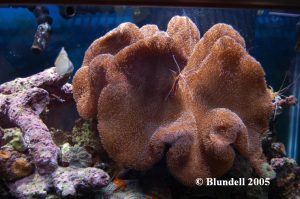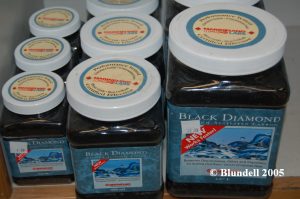 This article is written in response to reader questions and suggestions. Since the publication of Reef Aquarium Filtration I and II (Blundell 2005a, Blundell 2005b) I have received feedback from numerous readers. While most of the comments have been of appreciation, some have addressed terminology and concepts that had not been covered. This article is a continuation describing some of the more philosophical filtration practices and concepts.
This article is written in response to reader questions and suggestions. Since the publication of Reef Aquarium Filtration I and II (Blundell 2005a, Blundell 2005b) I have received feedback from numerous readers. While most of the comments have been of appreciation, some have addressed terminology and concepts that had not been covered. This article is a continuation describing some of the more philosophical filtration practices and concepts.
Natural Filtration
First off please understand that Natural Filtration in the purest sense only takes place in the ocean. Even then, on a coral reef it is not sure whether or not any filtration actually takes place. Some would view corals, fish, plankton, and algae as organisms all contributing to the filtration of the passing water. Others would view these organisms as part of the life cycle, all taking in food and excreting waste, never once filtering the water and potentially polluting it.
For the sake of argument let’s assume the coral reefs of the world do have ongoing natural filtration. This filtration includes substrate bacteria breaking down nitrogen compounds, corals eating plankton, sponges trapping and consuming particles, and very, very large amount of water moving through a reef system.
Artificial Filtration
In the same way that one may argue of natural filtration only taking place in the ocean; one may defend the position that all aquarium filtration is artificial. In a manner of speaking nothing about a captive aquarium is natural. Bioballs, protein skimmers, ozone units, and ultraviolet sterilizers are certainly not found on a reef….. or are they?
The Sliding Scale
It is important to notice that this article is not titled “Natural vs. Artificial Filtration” nor is it titled “Natural or Artificial Filtration” but instead uses the key word and. This is not by chance but instead well thought out following the input of fellow hobbyists. Because one could (and often do) argue that reef aquariums do not use any natural filtration, or that they heavily use natural filtration, we will use a sliding scale for the breakdown of common filtration methods.
The Question
My best efforts to understand filtration methods has left me with one overriding question. This question is what I ask myself every time I am presented with a filtration query. The question is “In what ways is this natural, and in what ways is this artificial?” Now you have the question, and I encourage you to ask yourself this question when you look at your own aquarium filtration. Some examples are explored below.
Filtration Methods Explored
Protein Skimmers
For years I considered these devices to be completely artificial and the result of some amazing human ingenuity. It wasn’t until 1997 that I began to think otherwise. While speaking with a few employees from a public aquarium in Portugal I began to see the natural basis to protein skimmers. I asked a question to these employees as to whether or not they used any mechanical/biological/natural filtration. Their response was that the aquarium ‘only used natural filtration such as live rock, deep sand beds, and protein skimmers’ (paraphrased). Simply put, I was confused. I had not heard anyone previously classify protein skimming (foam fractionation) as natural filtration. After some follow up questions I soon understood their view. Quite near to the aquarium these employees would walk along the Northern Atlantic Shoreline of the Iberian Peninsula. There they could witness the seafoam, or protein foam that was brought up on shore by the perpetual waves. In this way, protein skimming is quite natural.
Live Rock
While the endless of benefits of bacteria colonized live rock are not frequently debated what is of interest to many hobbyists are the effects of everything else that can live on substrate. One example of this is benefits of living sponges. One of my favorite items available these days is the live rock produced and grown in the waters off of the Atlantic coast of the United States. These live rock farms in the waters around Florida produce eco-friendly rock full of life.
I absolutely love this rock. One of my favorite aquariums I’ve owned was filled with this rock, and had a pair of Anemonefishes in it. Indeed Anemonefishes are not found in the Atlantic waters, and certainly are not found with the rock, sponges, gorgonian, and other life that was abundant on my aquascaping. This combination was odd, and certainly not natural in many ways. But then again sponges, gorgonian, crabs, Anemonefishes, and algae can be found on reef systems all over the world. Not only found together, but often relying upon each other for survival.
Water Changes
How natural and artificial are water changes? Do the currents simply bring in vast amounts of clean water and wash away the dirty water from the reefs? Or is it the same recirculating water moving from one reef area to the next?
Macro Algae
Unfortunately I can’t make this item a two sided debate. Maybe a reader can help me. So far, all my reading and personal observations say that growing macroalgae as a way of taking nutrients out of the water is natural filtration.
Conclusion
To assess filtration methods for natural and artificial concepts we need to be mindful of the overlapping terms. These two items are not exclusive but rather very depending on the perception of the viewer and method being employed. In order to form your own verdict remember the key question postulated here “In what ways is this natural, and in what ways is this artificial?”.
Author Information
Adam Blundell M.S. works in Marine Ecology, and in Pathology for the University of Utah. He is also Director of The Aquatic & Terrestrial Research Team, a group which utilizes research projects to bring together hobbyists and scientists. His vision is to see this type of collaboration lead to further advancements in aquarium husbandry. While not in the lab he is the former president of one of the Nation’s largest hobbyist clubs, the Wasatch Marine Aquarium Society (www.utahreefs.com). Adam has earned a BS in Marine Biology and an MS in the Natural Resource and Health fields. Adam can be found at [email protected].
References
- Blundell, A. (2005a) “Reef Aquarium Filtration Part I: Mechanical and Biological Filtration”, Advanced Aquarist Online Magazine, http://www.advancedaquarist.com/2005/5/lines/, USA.
- Blundell, A., (2005b) “Reef Aquarium Filtration Part II: Recycling and Removing”, Advanced Aquarist Online Magazine, http://www.advancedaquarist.com/2005/6/lines/, USA.



0 Comments